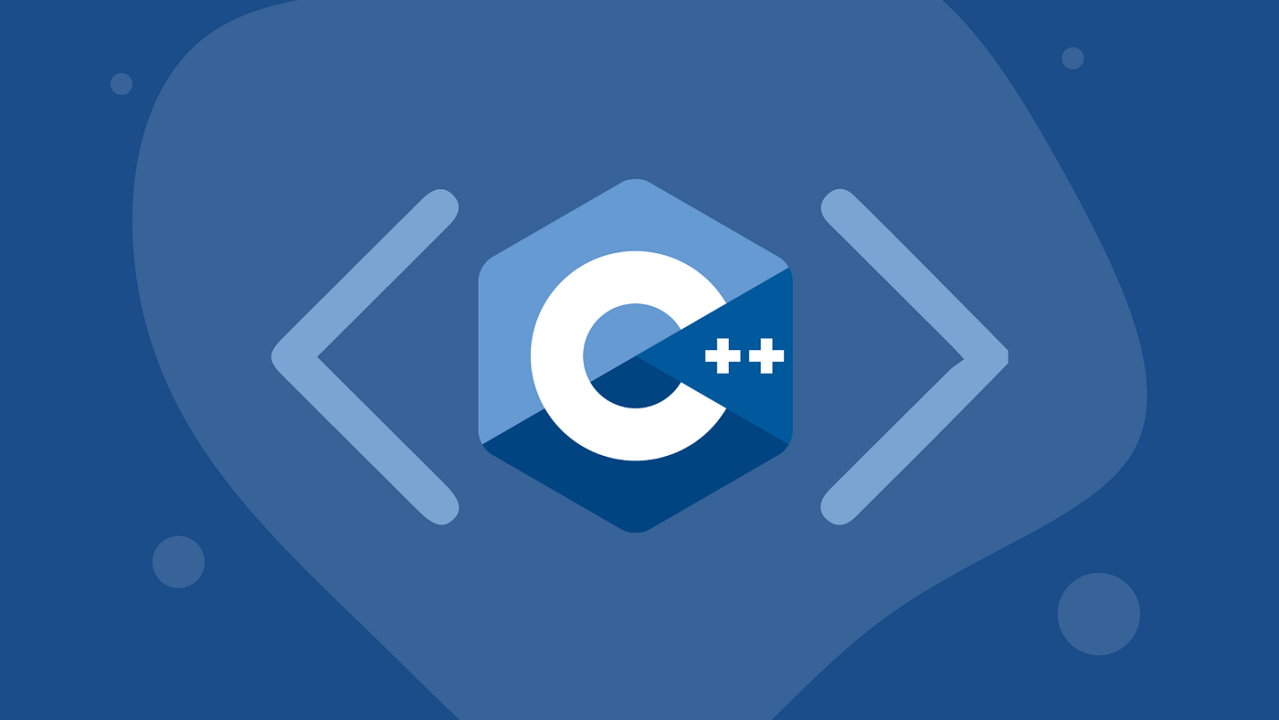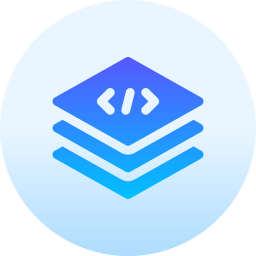Getting Started with C++: A Beginner’s Guide

MontaF - Sept. 1, 2024

C++ is a powerful, high-performance programming language that has been widely used for decades.
It’s the language behind many of the systems, games, and applications we use every day.
Whether you’re a complete beginner or have some programming experience, C++ is an excellent language to learn, especially if you’re interested in developing software that requires close interaction with hardware or needs to run efficiently.
In this guide, we'll walk you through the basics of C++, including installation, key concepts, and writing your first C++ program.
Why Learn C++?
C++ is a versatile language that offers several advantages:
- High Performance: C++ is known for its efficiency, making it a popular choice for applications that require high performance, such as game development, systems programming, and real-time simulations.
- Rich Standard Library: C++ comes with a comprehensive standard library that provides tools for handling data structures, algorithms, input/output operations, and more.
- Object-Oriented Programming: C++ supports object-oriented programming (OOP), which helps in organizing and managing complex software projects.
- Widely Used: C++ is used in many industries, including finance, game development, automotive, and more, making it a valuable skill in the job market.
Step 1: Installing a C++ Compiler
To start coding in C++, you need a compiler to translate your C++ code into machine code that your computer can execute.
Here’s how to set up a C++ development environment on different operating systems:
For Windows:
1.Install Visual Studio:
- Download and install Visual Studio, a popular integrated development environment (IDE) for C++ development.
- During installation, select the "Desktop development with C++" workload.
2.Verify Installation:
Open Visual Studio and create a new C++ project.
If you can compile and run the default template code, your installation is successful.
For macOS:
1.Install Xcode:
- Download Xcode from the Mac App Store. Xcode is Apple's official IDE that includes a C++ compiler.
- After installation, open Xcode and create a new C++ project to ensure everything is working.
2.Command Line Tools:
You can also install just the command-line tools (including the C++ compiler) by running the following command in Terminal:
xcode-select --install
For Linux:
1.Install GCC:
Most Linux distributions come with the GNU Compiler Collection (GCC) pre-installed. To install GCC, run:
sudo apt-get update sudo apt-get install build-essential
2.Verify Installation:
Check the GCC version to ensure it’s installed correctly:
g++ --version
Step 2: Writing Your First C++ Program
With your development environment set up, let’s write your first C++ program.
We’ll start with the classic “Hello, World!” example.
1.Open a Text Editor or IDE:
You can use any text editor (like Visual Studio Code, Sublime Text, or even Notepad++) or an IDE like Visual Studio or Xcode.
2.Write Your C++ Code:
Create a new file and type the following code:
#include <iostream>
int main() {
std::cout << "Hello, World!" << std::endl;
return 0;
}
3.Save the File:
Save the file with a .cpp extension, for example, hello.cpp.
4.Compile and Run the Program:
If you’re using an IDE, you can simply click “Run” or “Build” to compile and run the program.
This command compiles hello.cpp and creates an executable named hello.
Run the program by typing:
./hello
You should see the output:
Hello, World!
Step 3: Understanding C++ Basics
Now that you’ve written and run your first C++ program, let’s explore some fundamental C++ concepts
Variables and Data Types:
Variables are used to store data, and C++ supports various data types, including integers, floats, characters, and booleans.
#include <iostream>
int main() {
int age = 25; // Integer
float height = 5.9; // Floating point
char initial = 'A'; // Character
bool isStudent = true; // Boolean
std::cout << "Age: " << age << std::endl;
std::cout << "Height: " << height << std::endl;
std::cout << "Initial: " << initial << std::endl;
std::cout << "Is Student: " << isStudent << std::endl;
return 0;
}
Basic Operations:
C++ allows you to perform arithmetic operations like addition, subtraction, multiplication, and division.
#include <iostream>
int main() {
int a = 10;
int b = 3;
std::cout << "a + b = " << a + b << std::endl; // Addition
std::cout << "a - b = " << a - b << std::endl; // Subtraction
std::cout << "a * b = " << a * b << std::endl; // Multiplication
std::cout << "a / b = " << a / b << std::endl; // Division
std::cout << "a % b = " << a % b << std::endl; // Modulus (remainder)
return 0;
}
Control Flow:
C++ uses if-else statements to make decisions based on conditions.
#include <iostream>
int main() {
int age = 18;
if (age >= 18) {
std::cout << "You are an adult." << std::endl;
} else {
std::cout << "You are a minor." << std::endl;
}
return 0;
}
Loops:
Loops in C++ allow you to repeat a block of code multiple times. The most common loops are for and while loops.
#include <iostream>
int main() {
// For loop
for (int i = 0; i < 5; i++) {
std::cout << "Iteration " << i << std::endl;
}
// While loop
int count = 0;
while (count < 5) {
std::cout << "Count is " << count << std::endl;
count++;
}
return 0;
}
Functions:
Functions allow you to encapsulate code into reusable blocks. Here’s an example:
#include <iostream>
// Function declaration
int add(int x, int y) {
return x + y;
}
int main() {
int sum = add(5, 3);
std::cout << "Sum: " << sum << std::endl;
return 0;
}
Object-Oriented Programming (OOP):
C++ is an object-oriented language, which means you can define classes and objects to model real-world entities.
#include <iostream>
#include <string>
// Class definition
class Person {
public:
std::string name;
int age;
void introduce() {
std::cout << "Hello, my name is " << name << " and I am " << age << " years old." << std::endl;
}
};
int main() {
// Creating an object
Person person1;
person1.name = "Alice";
person1.age = 30;
// Calling a method
person1.introduce();
return 0;
}
Step 4: Compiling and Debugging
Compiling C++ Code
In C++, you write your code in source files with a .cpp extension. You then use a compiler like g++ to compile these files into an executable program.
For example, to compile multiple source files:
g++ file1.cpp file2.cpp -o myprogram
Debugging C++ Code
Debugging is a crucial skill in programming.
Tools like GDB (GNU Debugger) can help you step through your code, inspect variables, and understand what’s going wrong.
To compile your code with debugging symbols, use the -g flag:
g++ -g myprogram.cpp -o myprogram
Then run GDB:
gdb myprogram
Step 5: Next Steps
You’ve just taken your first steps in learning C++! Here are some suggestions for continuing your journey:
- Explore the C++ Standard Library: The C++ Standard Library provides a wealth of tools for handling strings, data structures, algorithms, and more.
- Work on Projects: Start small projects, such as a calculator, a simple game, or a file manager, to practice what you’ve learned.
- Learn about Advanced C++ Features: Dive into more advanced topics like pointers, memory management, templates, and the STL (Standard Template Library).
- Read C++ Books: Consider reading books like "The C++ Programming Language" by Bjarne Stroustrup or "Effective C++" by Scott Meyers for in-depth learning.
Conclusion
C++ is a powerful and versatile language that’s worth learning for anyone interested in software development, especially in fields where performance and hardware interaction are critical.
By mastering the basics, you’ve laid a strong foundation for further exploration and development.
Keep practicing, build projects, and soon you’ll be comfortable tackling more complex C++ programming challenges.
Happy coding!


